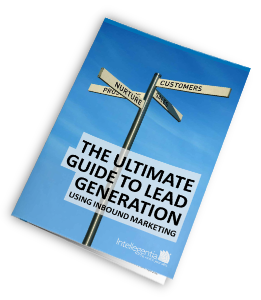
“We have just passed the 1000 followers mark on Twitter.”
“My latest blog post had 500 views!”
These are the kind of metrics you might hear many B2B inbound marketers bragging about.
There is nothing wrong with tracking things like how many followers you have on various networks, or how many likes and shares your content is receiving. Those are important metrics for certain purposes.
But they are not a measure of success.
Such measurements are vanity metrics – ones which tell us what numbers we are getting in terms of followers and views but do not provide any real insight into the kinds of people your business is creating engagement with or the return on investment of your marketing efforts. With vanity metrics you can easily fool yourself into believing your marketing efforts are successful when in fact they are not. You may have had hundreds of views on your latest blog post but if no one clicked through and converted then how much of a success was it really?
Visibility of your content is of course very important and therefore you do want to get as many people to follow you on social media and read your blogs as possible, but it is not just a numbers game.
Analytics technology puts a huge amount of measurable data at marketers’ fingertips, and can provide us with so much insight into not only what actions a visitor has taken on your site, but can also drill down into information such as why they visited and what they were trying to do, as well as an understanding of where you should be focusing your marketing efforts in future.
So, if vanity metrics are not the way forward, which key metrics should you be monitoring in order to measure your inbound marketing success?
1. Month over month growth in organic website traffic
This includes visitors who have arrived at your website through organic search as well as social referrals. Determine how much of this traffic goes on to convert to leads, and whether those leads ultimately turn into pipeline and revenue. This is a great way to prove that all the content, blogging, SEO linking, and social activity you are carrying out is actually impacting your bottom line. You can then drill down into which content areas or social platforms have resulted in the greatest increase in traffic, and thereby learn where to focus your efforts in future.
2. Landing Page Conversion Rate
Once a visitor has consumed a piece of relevant content, whether it’s an email or a blog, a strong call to action is the best way to move them down the funnel, linking them to a landing page where they can fill in their details to receive an offer such as an eBook or webinar. In many ways landing pages are more powerful than your other website pages. The practice of removing navigation on your landing pages means that when your visitors are on your landing pages, they stay there unless they choose to actually exit your page or they convert on your offer. With this captive audience, you have a great opportunity to use this page to move them along on their buying journey.
The following tips can increase the conversion rate on your landing page:
- Make your landing pages easy to digest
- Make them engaging – interesting and colourful but not over the top
- Make them direct and to the point, clearly spelling out the value for the visitor
- Use dynamic, personalised content, customised for each visitor
And make sure you test everything you do to see which aspects of your landing pages lead to the highest visitor-to-lead conversion ratio.
3. Website Traffic to Lead Ratio
If your website traffic is increasing and there are strong calls to action on all your content and placed strategically around your site, then you should hopefully be seeing your leads increase as well. If you’re not satisfied with your overall visitor-to-lead conversion rate, take a look at the conversion rates of individual pages on your website. Start with your best performing pages – the ones that attract the greatest number of visitors. Ask the following questions:
- Do these pages have calls to action?
- Are the CTAs related to the topic of the page on which they are placed?
- Are they appropriate to the various stages of the buyer’s journey?
Understanding which CTAs to offer visitors is critical. For example you don’t want to place your Bottom of the Funnel offer on a Top of the Funnel page, regardless of how heavily trafficked it is, because the visitors will not be ready for such an offer.
4. Lead to Customer Ratio
Your audience may be engaged and devouring every piece of content you put out, but how do you know that they are qualified or whether they’re even planning to purchase in the near future?
Your lead to customer rate tells you what percentage of contacts that have engaged with you will ultimately go on to make a purchase.
If you’re not happy with your lead to customer ratio, make more of an effort to qualify your leads, or even use lead scoring to get more insight into what makes a lead ready to become a customer. Drill down into your Marketing Qualified Lead (MQL) and Sales Qualified Lead (SQL) criteria, and begin to nurture them. Companies that excel at lead nurturing generate 50% more sales ready leads at 33% lower cost. (Forrester Research)
5. New Business from Inbound Activities
Have you generated any new business as a result of your inbound marketing activities?
Many analytics and marketing automation software platforms make it easier than ever to measure the ROI of your inbound marketing activity. Tools like HubSpot’s Sources Report make it very easy to gain visibility of this. You can see exactly how your website visitors found you, including who is coming in from organic search, from social media, from email marketing referrals and even direct traffic.
The great thing about the Sources Report is that it doesn’t just tell you where your visitors came from, it also tells you how many of those visitors converted into leads, and then into customers – and it breaks it all down by channel. If you’re carrying out your inbound marketing effectively, you should be seeing inbound results under all channels!
Want to understand how your sales and marketing efforts can take a leap forward, review our ebook "The ultimate guide to lead generation using inbound marketing"

.png?width=250&height=76&name=Intellegentia%20Logo%20(MAIN).png)